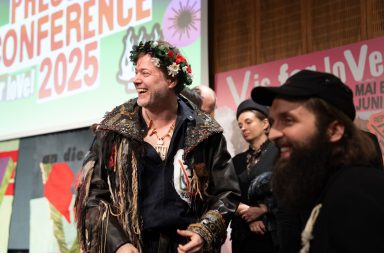
Romanian Pavilionat the Biennale Arte 2024
Giardini della Biennale and New Gallery of the Romanian Institute of Culture and Humanistic Research
20 April – 24 November 2024
The Romanian Pavilion at the Biennale Arte 2024 is set to showcase an exhibition by Romanian artist Șerban Savu, centred around the history and relationship of work and leisure. Curated by Ciprian Mureșan, the exhibition will take place in both the Giardini della Biennale and at The New Gallery of the Romanian Institute of Culture and Humanistic Research in Venice.
The exhibition in the Romanian Pavilion, What Work Is, intricately weaves the complex iconography of work and leisure, drawing inspiration from historical realism, its ideology, and propaganda art of the Eastern Bloc. Instead of challenging or deconstructing these discourses, Savu rearranges the themes of revolutionary spirit and cohesion among workers. His aim is to capture and portray moments of pause and inactivity as reflections of broader societal changes or crises.
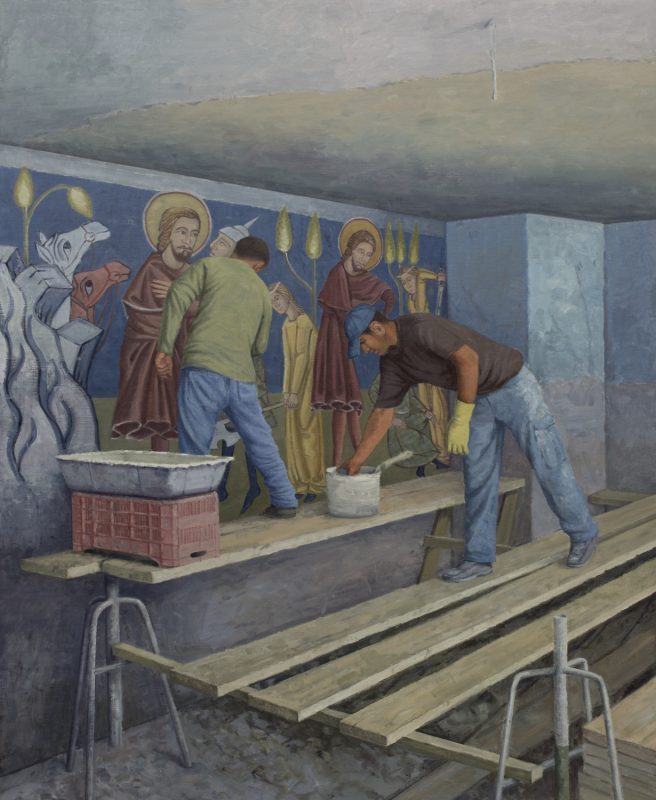
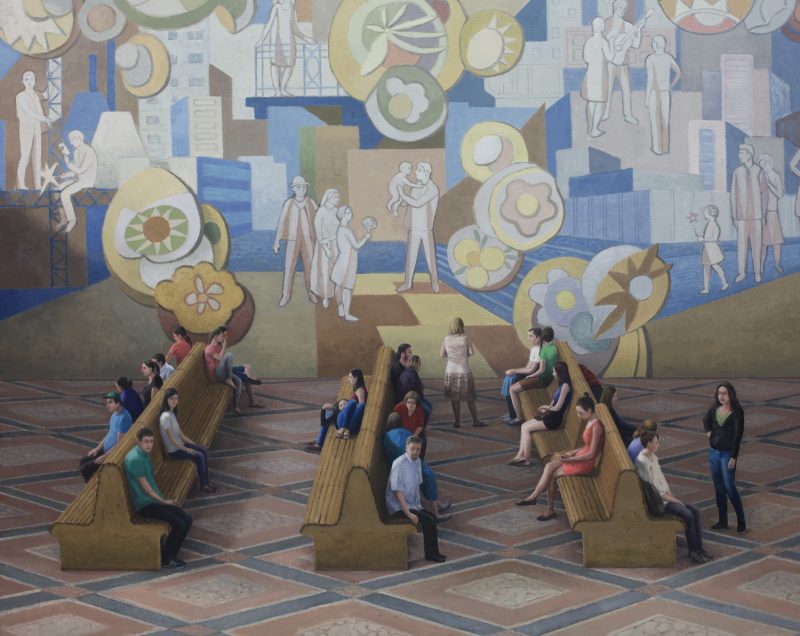
Addressing the general theme of the 60th International Art Exhibition – La Biennale di Venezia, “Foreigners Everywhere”, the sense of disorientation in a political or economic limbo, which is the signature of many paintings by Șerban Savu, is a reflection on the displacement and homesickness associated with migratory work – the disconnection between labour and belonging. The narrative of gaining employment elsewhere and the blissful return to one’s roots can often result in estrangement and double alienation: becoming foreign to themselves. The characters depicted in Savu’s What Work Is are caught in a temporal no-man’s-land between two worlds pivoting away from one another.
Inside the Pavilion, arranged in a vast polyptych consisting of about forty paintings – a cross-section of Savu’s work over the last fifteen years – are populated by disorientated protagonists and lethargic extras, all caught in the lull between work and rest. Across from the polyptych, a large bench incorporates plinths displaying four architectural models adorned with mosaics. These mosaics deviate from the usual themes found in religious settings or the labour-focused narratives typical of Socialist mosaic art. Instead of portraying grand achievements or symbolic representations, the mosaics convey bathos, ambiguity, calmness, and confusion. The paintings and models create a space that raises questions about work and challenges its negative definitions: what work is not, what it does not look like, and what it does not mean.
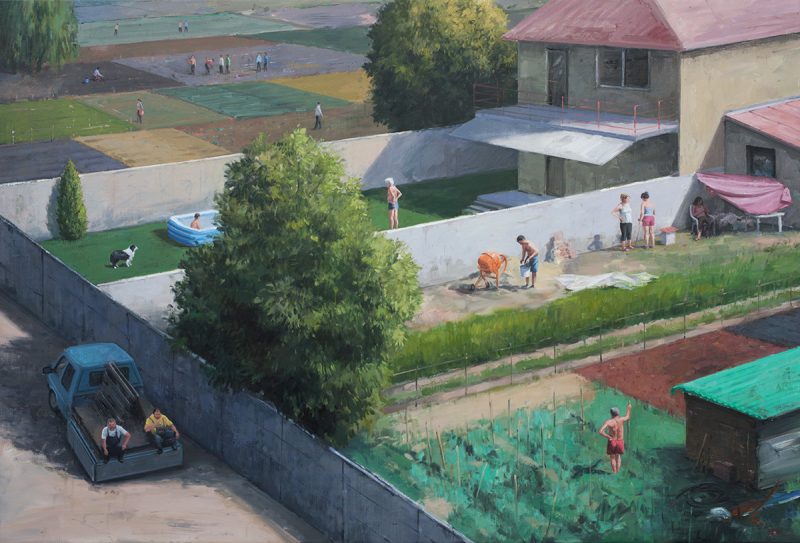

Invited to respond to Savu’s project, the Brussels-based graphic design studio Atelier Brenda (Sophie Keij and Nana Esi) offers a site-specific intervention on the façade and in the lobby of the Romanian Pavilion. Their large-scale design messaging will be a study in non-ideological propaganda, like the advertising for a social factory: a production facility for a new kind of subjectivity.
Complementing the presentation in the Romanian Pavilion, Savu will transform The New Gallery of the Romanian Institute of Culture and Humanistic Research in Venice into a mosaic workshop. Reflecting the small emblematic Venetian workshops, The New Gallery becomes a space for production carrying on the manufacturing tradition while the Giardini Pavilion functions as a space for reflection and meditation.
The New Gallery will also host a public programme of talks, on topics ranging from the histories of mosaic to theories of work in contemporary anthropology, economy and philosophy, on ecology and the post-work society, coordinated by Ovidiu Ţichindeleanu, a prominent Chișinău-based cultural critic.
The exhibition will be complemented by the publication at the end of the Biennale Arte 2024 of a book edited by Mihnea Mircan that will bring together a series of critical texts relevant to the themes raised by the works presented in Venice and which will richly illustrate it.
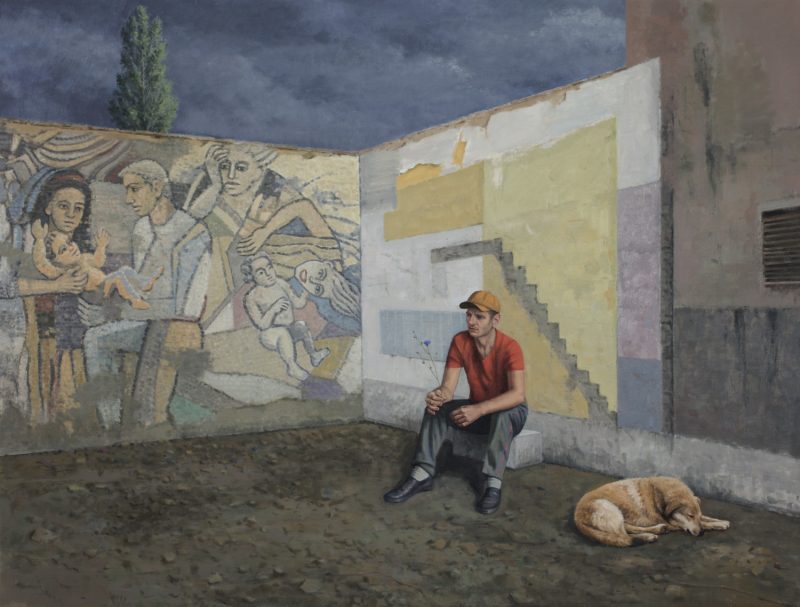
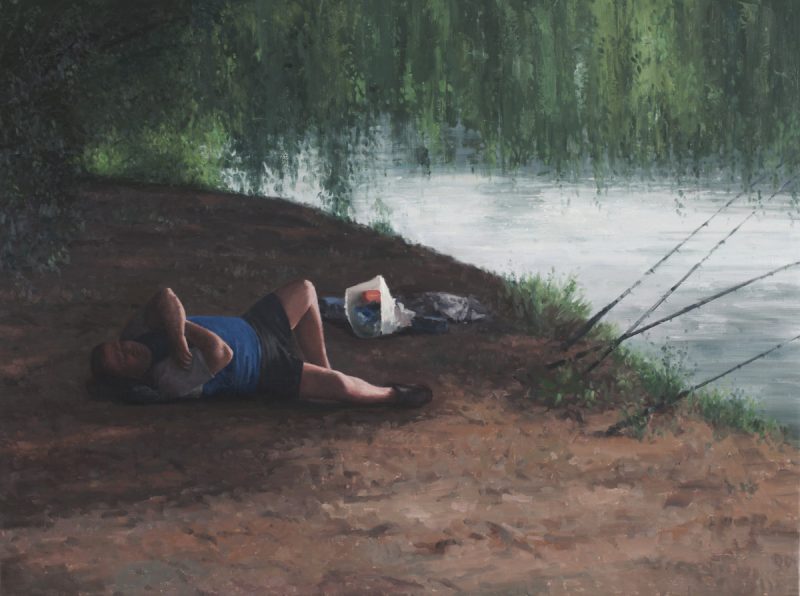
Commissioner: Ioana Ciocan;
Exhibitor: Șerban Savu, Atelier Brenda (Nana Esi & Sophie Keij)
Curator: Ciprian Mureșan;
Editor: Mihnea Mircan
Project Manager: Cristian Alexandru Damian
PR: Sutton Agency; Dăescu Borțun Olteanu Agency (DBO)
Photography: Marius Popuț
Architect: Gabriel Chiș
Initiated by IDEA Foundation
Organisers: Romanian Ministry of Culture; Romanian Ministry of Foreign Affairs; Romanian Cultural Institute
Partners: The National Museum of Contemporary Art, Bucharest, The Museum of Modern Art, Warsaw, S.M.A.K., Ghent, Kunsthalle Bega, Timișoara, The Museum of Art, Chișinău, The National University of Arts “George Enescu”, Iași, The University of Art, Chișinău, Ghenie Studios GmbH, Berlin, Cluj Cultural Centre, Galeria Plan B, Berlin/Cluj-Napoca, Nicodim Gallery, Bucharest/Los Angeles/New York, Galeria Dawid Radziszewski, Warsaw.
For all international media enquiries please contact Mana Merikhy,
mana@suttoncomms.com / M: +44 (0) 7595217618
For all Romanian media enquiries please contact Mariana Nicolae,
mariana.nicolae@dbopeople.ro / M: +40 727 089 274
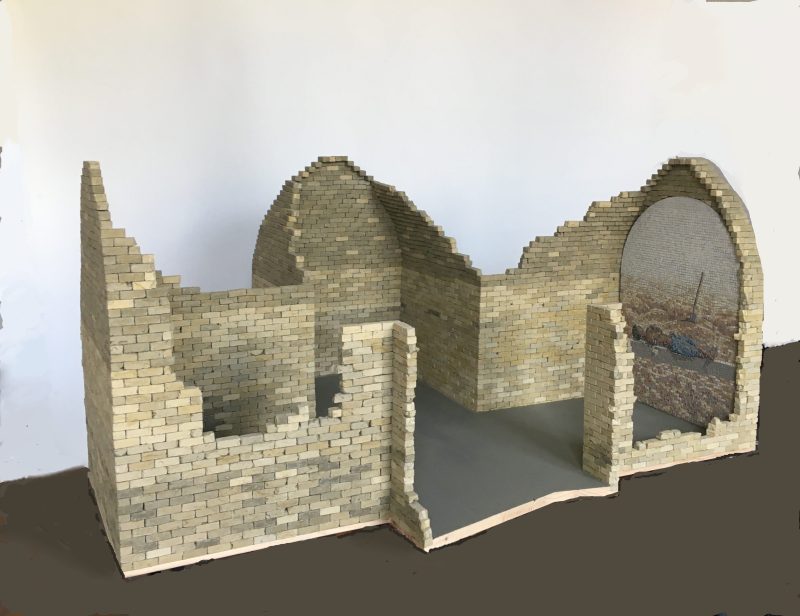
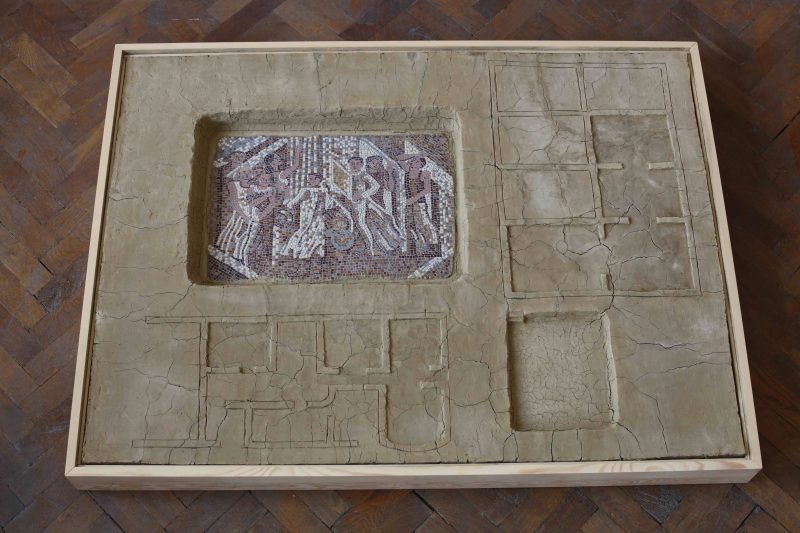
Ends
Notes to Editors
About the artist
Șerban Savu is an artist who lives and works in Cluj-Napoca. Interested in the multiple meanings of the visible reality, he paints the image of the world around him reflected through the filter of art history. Characterized by empathy and a keen sense of observation, by means of synthesis and re-composition his paintings are an invitation to reassess the present in a wider historical context. Savu’s works were exhibited at Centre Pompidou, Paris; Fondazione Nicola Del Roscio, Rome; Galerie Rudolfinum, Prague; Museo Pietro Canonica a Villa Borghese, Rome; National Museum of Contemporary Art, Bucharest; Le Lait Centre D’art Contemporain, Albi; PLATEAU, Samsung Museum of Art, Seoul; Arken Museum of Modern Art, Ishoj; Mucsarnok Kunsthalle, Budapest.
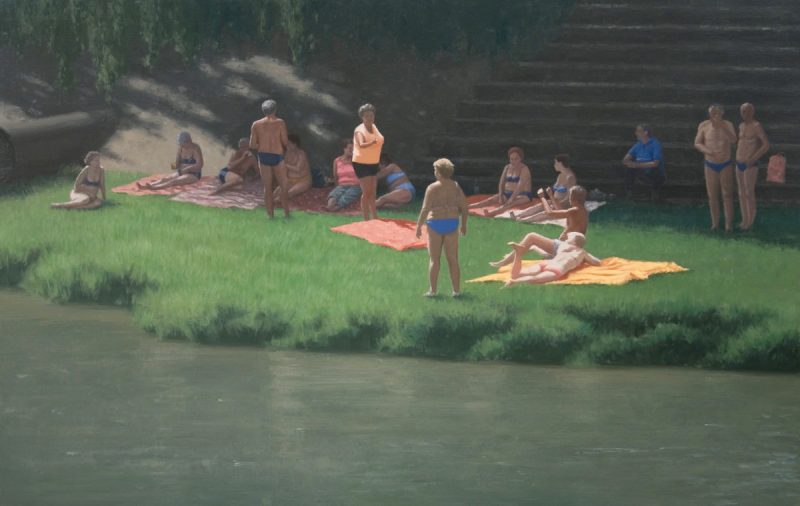
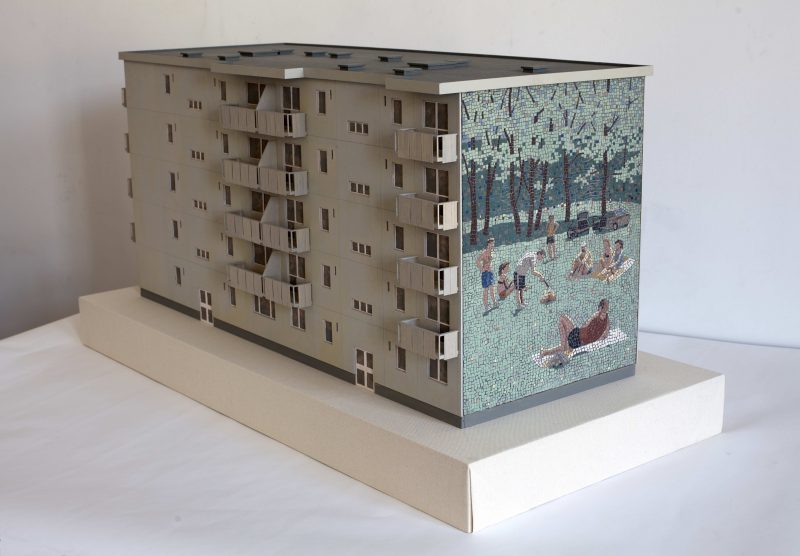
About the invited artists/designers
Atelier Brenda is a merged alter ego for two female designers—Nana Esi & Sophie Keij—whose practice is primarily focused on graphic design and a creative direction characterized by a continuous interaction between the cognitive and the subconscious. Their approach to graphic design is formed by a combination of nostalgia, tradition, zeitgeist, and method acting. General themes and returning practices are experience, research, space design, dreams, spirituality, and the ethereal and playful typography.
About the curator
Ciprian Mureșan is an artist who lives and works in Cluj-Napoca. Mureşan exhibited in the Romanian Pavilion at the 53rd edition of La Biennale di Venezia, took part in the 17th Biennale of Sydney and the international exhibition at the 57th edition of La Biennale di Venezia. His work has also been shown at Centre Pompidou in Paris, Tate Modern in London, The San Francisco Museum of Modern Art, The New Museum New York, SMAK Museum, Ghent. His long-term interest in the curatorial practice translated in exhibitions such as Volume by Layers, Cazarma U, Timișoara 2023 – European Capital of Culture; Domino Dancing, Galeria Plan B, Cluj; It is Mandatory to Have a Title, Salonul de proiecte, Bucharest, among others.
Cover image: Saint Christopher, 2022
